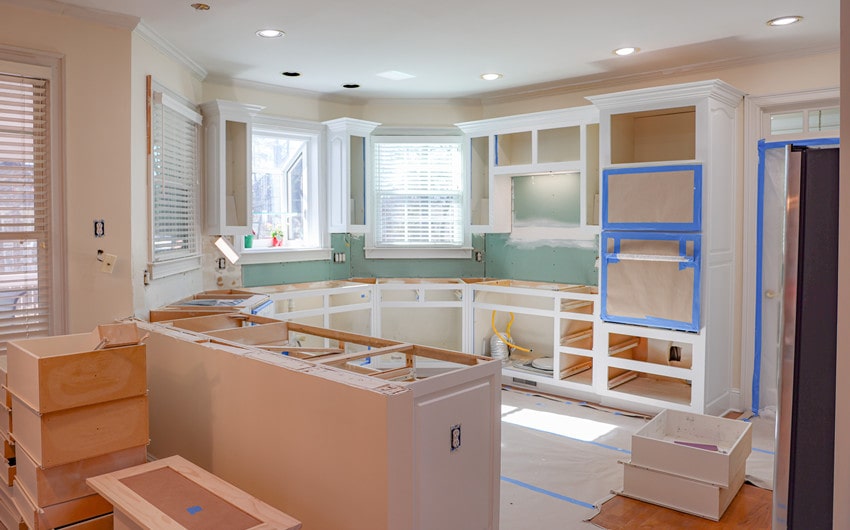Smart Remodeling Tips for Your Next Project
Remodeling a home demands more than paint swatches and Pinterest boards – it requires extraordinary planning, funds, logistics, and good old-fashioned labor. Homeowners who take the time upfront to assess their needs honestly, vet contractors, and plan for contingencies position themselves to make good choices.
Understanding Your Needs and Goals
Before picking paint colors or shopping for fixtures, map out what matters. A clear vision prevents costly changes mid-project, gives a more accurate idea for estimates, and helps contractors deliver precisely what you want. This involves assessing your needs, setting long-term goals, and aligning with your chosen values.
Assessing Personal Needs
Map out how you use your space across a typical week. A busy family might need extra storage and durable surfaces, while empty nesters could prioritize luxury touches. Track traffic patterns and daily frustrations — these reveal what needs fixing first.
Setting Long-term Goals
Factor in a 5-10 year view of your home use. Young families might plan for growing children, while others focus on aging-in-place features like walk-in showers. Resale value matters, but it shouldn’t override personal comfort; neutral updates typically return more of their cost than dramatic ones.
Aligning with Values
Look beyond trends toward lasting choices that match your principles, even when you’re just remodeling your bathroom. Sustainable materials cost more upfront but appreciably reduce long-term maintenance. Local suppliers often provide better warranties and support community growth.
Budgeting Wisely for Your Remodel
Most renovation headaches stem from money surprises. A solid budget acts like a project roadmap, helping navigate decisions from start to finish. Experienced contractors report that projects fail not from poor workmanship but from misaligned expectations and hidden costs.
Creating a Realistic Budget
Break down costs room by room, factoring in materials, labor, permits, and disposal fees. Set aside 20% for unexpected structural or code compliance issues. Remember that labor typically claims half the total budget – skilled work costs more but prevents costly fixes later.
Finding Cost-effective Solutions
Compare prices across multiple suppliers and seasons. Floor models and discontinued items often match the quality of current versions at significant discounts. Phase your updates strategically, focusing on changes that immediately improve daily life.
Understanding Financing Options
Research loans with competitive interest rates and manageable terms, and search for special offers that may come with lower rates. Look into manufacturer rebates and energy efficiency incentives too, which vary by state.
Exploring Design Options that Reflect Cultural Heritage
Renovation choices shape more than space – they craft an environment that tells your story. Smart design balances modern function with personal meaning, creating rooms that work better and feel right without compromising your budget or logistics.
Incorporating Cultural Elements
Mix traditional materials with contemporary layouts to honor heritage without sacrificing utility. Natural elements and handcrafted details add depth to modern spaces. Compare how colors, patterns, and textures echo family traditions while meeting everyday needs.
Balancing Modern Trends with Tradition
Select enduring features over passing fads. High-traffic areas need durable materials that maintain their character through years of use. Updates should serve both function and meaning – choose elements that make sense for your lifestyle while keeping cultural connections intact.
Working with Designers
Partner with professionals who listen and respect your vision. Check portfolios for versatility rather than a single style. Good designers ask questions about your background and daily routines before suggesting solutions.
Finding Trusted Contractors and Resources
Success hinges on working with reliable professionals who respect your vision and budget. Taking time to vet potential partners and contractors saves a lot of money and stress during the renovation process — be sure to prioritize communication and take advantage of community resources when possible.
Finding Trusted Contractors and Resources
Look farther than the lowest bid when hiring professionals. Check licenses, insurance coverage, and recent project photos. Past clients offer insights about communication style and project management skills. Multiple detailed bids reveal how thoroughly contractors understand your goals.
Establishing Clear Communication
Put every project detail in writing, from material specifications to payment schedules – nothing goes undocumented. Regular check-ins prevent misunderstandings before they become problems. Keep a shared document tracking decisions and changes, as it protects both parties and maintains project momentum.
Utilizing Community Resources
Connect with neighborhood associations and local building departments early. Professional organizations often maintain lists of certified specialists. Trade shows and home improvement events provide opportunities to evaluate contractors in person and compare services directly.
Wrapping Up
Renovation success grows from methodical planning and informed choices. Start with clear goals, build a realistic budget, mix meaningful design elements, and partner with professionals who understand your vision. Smart planning now prevents costly corrections later.






